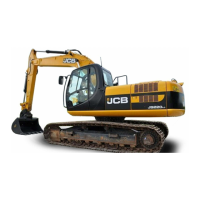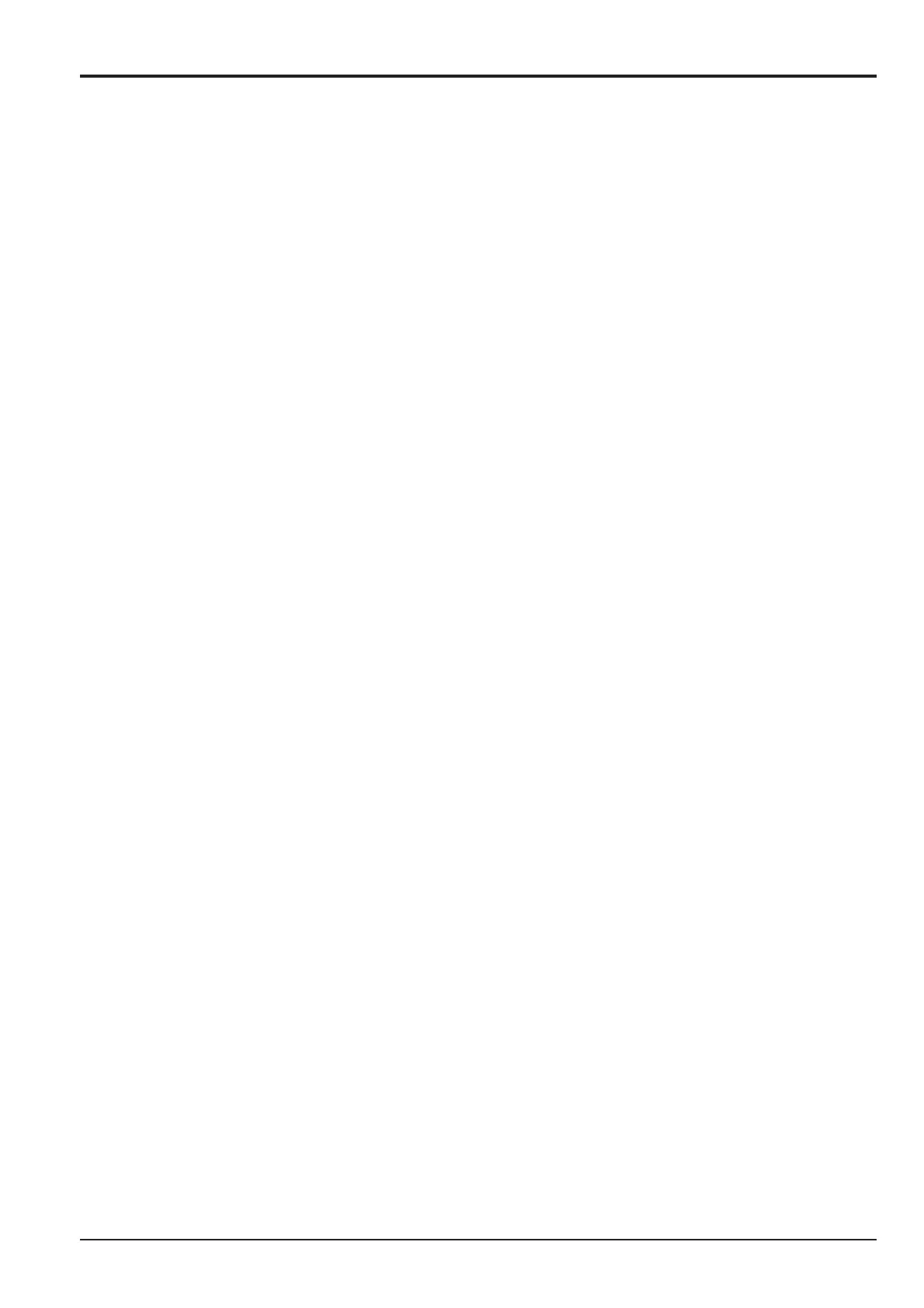31 - 2
Section E
Hydraulics
9803/6400
Section E
31 - 2
Issue 1
Control Valve JS200/JS240
The following details refer to the illustrations at the beginning of this Section.
Operation
The control valve is constructed with the 4-spool and 5-spool sides overlapping and integrated into one.
When all spools are neutral
1. Neutral passage (Refer to Fig. 1,2)
The oil delivered by P
R port passes through the (A) cavity by the 4-spool neutral passage, and is returned to the tank by TR
port. Part of the oil passes through the (C) (D) (E) (F) passage and is returned to the tank by TL
port. If the machine is started
from cold, the oil also pushes open the negative control relief valve (B).
Pressure in (A) cavity is led from Psr port to the pump and controls the P
R port delivery volume. (Negative control).
Also, when there is a large volume of oil flowing through the neutral passage due to a lag in the pump's delivery control, the low
pressure relief valve, which is contained in the negative control relief valve, works to prevent the pressure of PSR port from
becoming abnormally high.
The oil delivered by P
L port passes through the neutral passage A of the 5-spool control valve via passage Y into the 4-spool
passage W passing through (G) cavity, pushing open negative control valve (H) and flowing to the T
R port. Part of the oil
passes through the (C) (D) (E) (F) passage and is returned to the tank from the Tl port.
The pressure of (G) cavity is led from the P
SL port to the pump and controls the PL pump delivery volume.
2. Signal Passage (Refer to Fig. 1,3,9)
The oil from the signal hydraulic source entering the P; port flows through the restriction (a) and is led to the P
P port and
passage (b), 5-spool travel spool signal land part, passing through passage (c) (d) and is released to the 4-spool tank passage.
Part of the oil entering P
P port flows through restriction (I) and is led to PP port and passage (e), flows through each spool of the
5-spool signal land part and is released to the tank passage.
Also, the oil passing through restriction (J) flows through passage (f), land (k) and flows to the tank passage. Part of the oil flow
from passage (g) (h) to land (L) and is released to the 4-spool tank passage.

